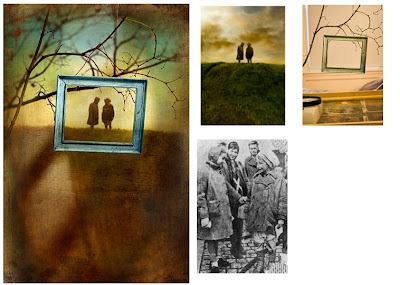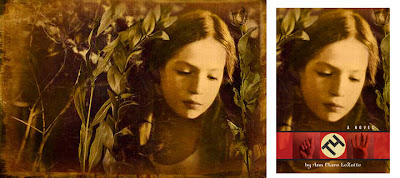
This must be the month for holocaust book covers. No Pretty Pictures is the powerful wartime memoir of the well-known children's book artist, Anita Lobel. The project art director is Paul Zakris of Greenwillow Books.
Born into a Polish Jewish family in 1934, Lobel, along with her younger brother, spent most of WWII fleeing the Nazis in the Polish countryside before being sent to a concentration camp near the war's end. Miraculously, they were liberated in 1945 and eventually reunited with their parents.
Above is the finished artwork depicting the small "framed" figures of the author and her brother silhouetted on a lonely hillside. At right is the b&w photo (taken shortly after the war) which I used for the figures. To make the photograph of the figures in the landscape, I made a table top model and placed small colorized cutout figures (about 2 or 3 inches high) on the "hill" against a sky backdrop. Much of the detail ended up on the cutting room floor when I digitally added the frame, branches, and painted textures in the finish, but such is life.
My intention is for the weathered, hanging frame to suggest the abandoned possessions of the many victims, as well as to tie in with the title.

